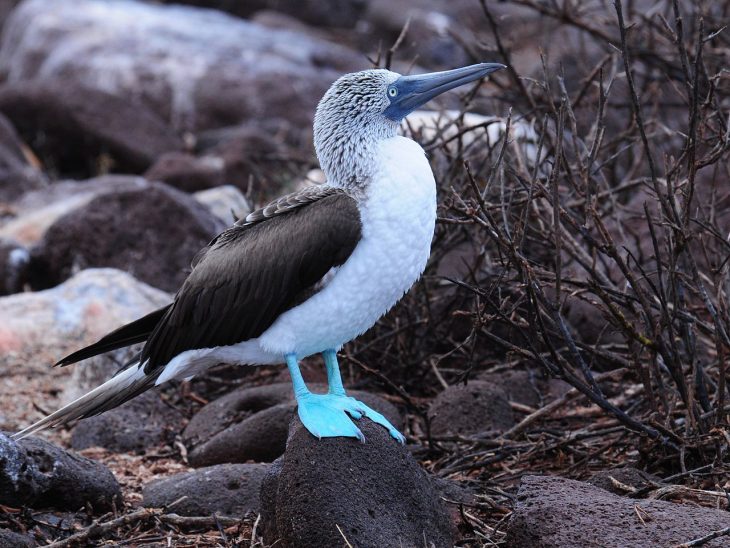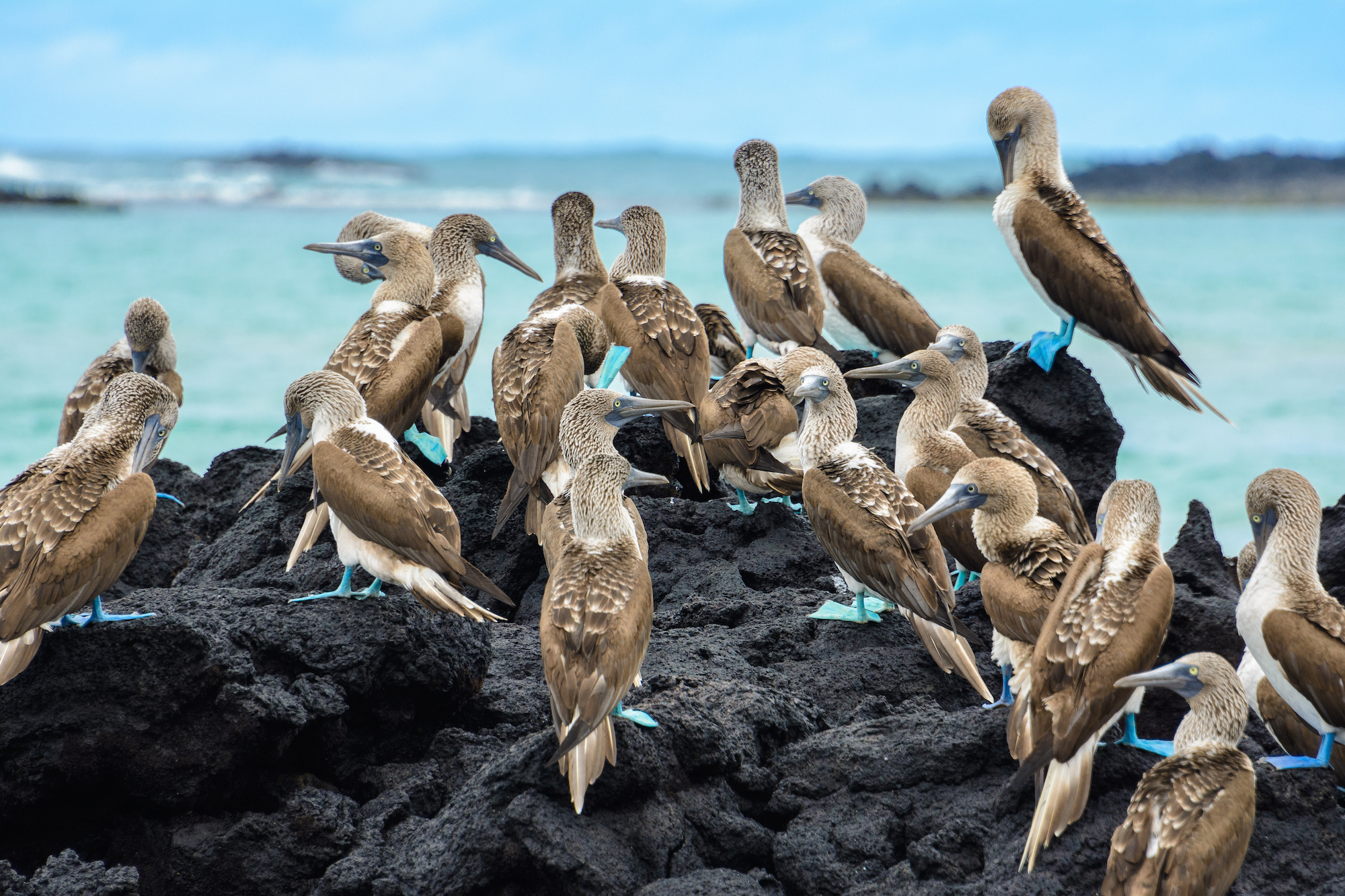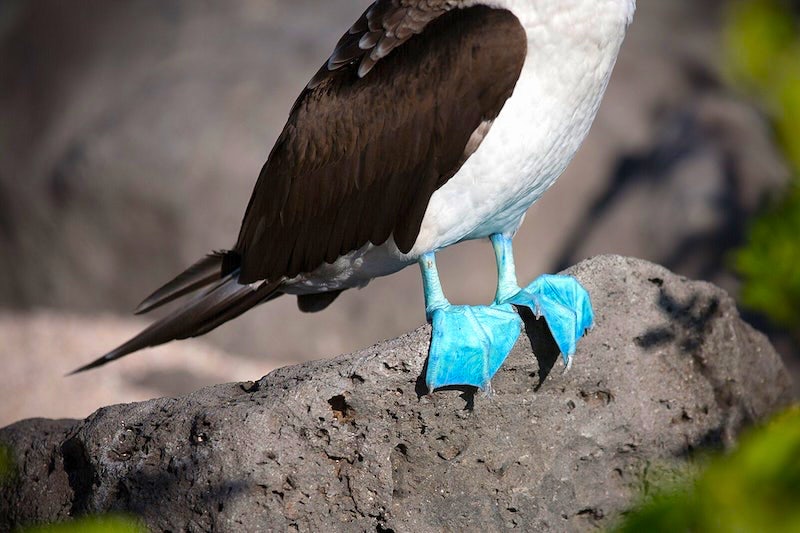
From the Galapagos Islands to the coastlines of Mexico, one bird species is taking the marine world by storm – and it’s not because of its flying abilities. Rather, it’s their distinctively hued feet that have people talking. Meet the blue-footed booby, a creature whose quirky name is only eclipsed by its equally quirky behaviors and biology. This article will walk you through 18 fascinating facts about the blue-footed booby that make this bird a sight to behold.
The Name Game
The name “booby” derives from the Spanish term “bobo”, which translates to “clown” or “fool. This moniker perfectly captures the bird’s seemingly clumsy, comic movements on land.
Shades of Blue
What makes the blue-footed booby famous is, of course, its vibrant blue feet. The color of their feet is a result of carotenoids, a type of pigment they get from their diet. The brighter the hue, the healthier the bird is considered to be.
A Blue Attraction
These blue feet aren’t just for show; they play a crucial role in the bird’s mating ritual. Males strut their blue feet in a high-stepping dance to attract females, the intensity of the color signaling their overall health and suitability as a mate.
Eye-Catching Eyes
Blue-footed boobies possess striking yellow eyes, which is a stark contrast to their blue feet. Their binocular vision enables them to spot fish while flying high above the water.
Incredible Divers
These birds are proficient divers, plunging into the ocean at high speeds to catch their prey. They can dive from a height of up to 100 feet and can reach depths of 82 feet below the water’s surface.
Dietary Preference
Blue-footed boobies predominantly feed on small fish, such as anchovies and sardines. They use a cooperative hunting strategy, where a group of birds will dive simultaneously to trap a school of fish.

Nesting Habits
Unlike other birds that build intricate nests, blue-footed boobies prefer simplicity. They lay their eggs on bare, flat ground, often on clifftops or rocky islands.
Raising the Chicks
Both parents share the responsibility of incubating the eggs and feeding the chicks once they hatch. This cooperative parental care ensures the survival of their offspring.
Longevity
Blue-footed boobies have a lifespan of around 15 to 20 years in the wild. Their survival is significantly influenced by the availability of food and the presence of predators.
Mating for Life
Although not entirely monogamous, blue-footed boobies often mate with the same partner for many years. They display complex mating rituals, including the famous “sky pointing” where the male stretches his neck towards the sky while flaunting his blue feet.
Natural Predators
Despite their formidable diving abilities, blue-footed boobies aren’t without natural predators. Sharks, larger birds of prey, and even feral cats on some islands pose threats to these birds.
Distribution
Blue-footed boobies inhabit tropical and subtropical islands of the Pacific Ocean. The majority of their population is found in the Galapagos Islands.

Not a Strong Swimmer
Despite being seabirds, blue-footed boobies are not particularly good swimmers. They spend most of their time in the air or perched comfortably on land.
Conservation Status
The blue-footed booby is not currently considered an endangered species. However, threats like overfishing and habitat loss could potentially impact their populations in the future.
Unique Vocalizations
Each blue-footed booby possesses a unique vocalization, which allows individual birds to recognize their mates and offspring among thousands of other birds.
Population Size
The estimated global population of blue-footed boobies is around 200,000. About half of them reside in the Galapagos Islands.
Molting Process
Blue-footed boobies undergo a molting process where they shed old feathers and grow new ones. This occurs once a year for adults and helps maintain the efficiency of their flight and diving.
Symbol of the Galapagos
Given their significant population in the Galapagos Islands and their iconic status, the blue-footed booby has become a symbol of these unique islands and a must-see for any wildlife enthusiast.
Conclusion
In the intricate ballet of nature, the blue-footed booby performs with a charm and charisma that is hard to forget. Their quirky habits, spectacular hunting skills, and, of course, their vibrant blue feet, make these seabirds a fascinating subject of study. Whether you’re an avid birdwatcher or a casual wildlife observer, the blue-footed booby’s captivating traits are bound to leave an indelible imprint on your memory.
Was this page helpful?
Our commitment to delivering trustworthy and engaging content is at the heart of what we do. Each fact on our site is contributed by real users like you, bringing a wealth of diverse insights and information. To ensure the highest standards of accuracy and reliability, our dedicated editors meticulously review each submission. This process guarantees that the facts we share are not only fascinating but also credible. Trust in our commitment to quality and authenticity as you explore and learn with us.


